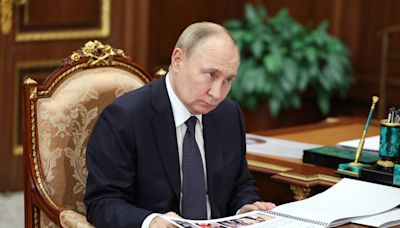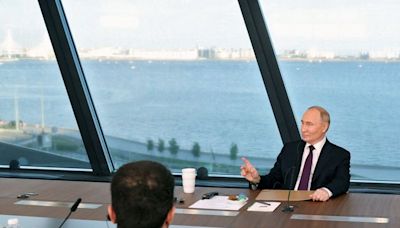Search results
People also ask
Which countries are considered nuclear-weapon states?
Which countries have nuclear weapons based on their own territory?
Which countries have successfully detonated nuclear weapons?
Which countries have no nuclear weapons?
Five are considered to be nuclear-weapon states (NWS) under the terms of the Treaty on the Non-Proliferation of Nuclear Weapons (NPT). In order of acquisition of nuclear weapons, these are the United States, Russia (the successor of the former Soviet Union), the United Kingdom, France, and China. Of these, the three NATO members, the United ...
- Overview
- Current states with declared nuclear weapons
- States that formerly possessed nuclear weapons
Since the first atomic bomb was produced in 1945, only a handful of states have obtained nuclear weapons. Nuclear proliferation was an early concern of the Cold War, and the fear of nuclear war led to the conclusion of the Nuclear Non-Proliferation Treaty (NPT) in 1968. At that time, only five or six countries had developed nuclear weapons, while the treaty created disincentives for other countries to produce them. India and Pakistan, which were never signatories of the NPT, have since acquired nuclear warheads of their own; South Africa also produced nuclear devices beginning in 1979, but it later dismantled them before joining the NPT in 1991. One country, North Korea, has left the NPT and subsequently developed nuclear weaponry. Some signatories of the NPT have been accused of noncompliance; none has successfully produced a nuclear weapon, apart from those that already had them, although Iran reached the verge of nuclear breakout in 2023. The former Soviet states of Belarus, Kazakhstan, and Ukraine inherited nuclear weapons after the Soviet Union’s collapse, but in 1992 they agreed either to destroy their nuclear weapons or hand them over to Russia.
Below is a list of states with nuclear weapons, categorized according to states that are known to currently possess nuclear weapons, those believed to possess nuclear weapons without public acknowledgment, and those that formerly possessed nuclear weapons but no longer do. Within those categories, they are listed according to the year of their first nuclear weapons test.
•United States (1945)
•Russia (as successor to the former Soviet Union; 1949)
•United Kingdom (1952)
•France (1960)
•China (1964)
•India (1974)
•South Africa (1979 [unconfirmed]; disarmament completed in 1991)
•Kazakhstan (inherited from the Soviet Union in 1991; disarmament completed in 1995)
•Ukraine (inherited from the Soviet Union in 1991; disarmament completed in 1996)
•Belarus (inherited from the Soviet Union in 1991; disarmament completed in 1996)
Five are considered to be nuclear-weapon states (NWS) under the terms of the Treaty on the Non-Proliferation of Nuclear Weapons (NPT). In order of acquisition of nuclear weapons, these are the United States, Russia, the United Kingdom, France, and China.
Nine countries currently have nuclear weapons: Russia, the United States, China, France, the United Kingdom, Pakistan, India, Israel, and North Korea. These nuclear powers differ a lot in how many nuclear warheads they have.
Apr 1, 2022 · The United States and Russia have nuclear weapons across their territory. The U.S. also has nuclear weapons in Europe, at air bases in NATO members Belgium, Germany, Italy, the Netherlands and...
Jan 14, 2020 · These five countries are called nuclear-weapon states - and are allowed to have weapons because they built and tested a nuclear explosive device before the treaty came into effect on 1...



